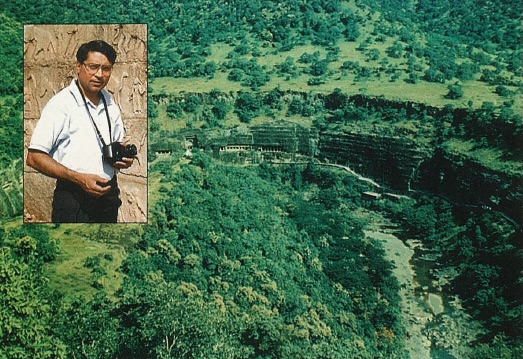By M. P. MOHANTY
For the last seven years I have been pleading to build replicas of the Ajanta Caves,” says photographer Benoy K. Behl of the Archaeological Survey of India. “Then people would not have to go into the real caves where the delicate ancient paintings are being spoiled due to the humidity of their breathing, bacteria left behind and change in temperature.” The same problem has occurred in Europe with cave paintings dating to the Stone Age, and those caves are being closed to human traffic. Behl’s persistence has paid off, and now the Government of India, with monetary aid from Japan, will build a hi-tech reproduction of the three major caves as part of a museum adjacent to the site.
Ajanta Caves was the first historical site in India to be placed on the United Nation’s World Heritage List. The 29 caves were carved between the 2nd century bce and the 7th century ce. They contain large frescos depicting numerous images of Buddha and provide a panorama of life in India 2,000 years ago as informative as it is artistic. From the scenes has been gained precise information on the buildings, dress, family life, common animals, musical instruments, even hair styles of the time. With the decline of Buddhism in India in the 7th century ce, the caves, some still unfinished, were gradually abandoned. It was only in 1819 that British explorers rediscovered them along the Wagurna River.
Behl has developed a technique for taking photographs in very low light, an ideal strategy for reproducing the paintings, which can be damaged further even by a photo flash. Behl’s full-size photos will be installed in the cement recreation of the three caves, which will also include replicas of the various rock carvings. The photos will be computer enhanced to restore their original luster.
“I believe Ajanta embodies compassion and human understanding more than any body of art in the world,” says Behl. “It was done out of devotion by simple, humble painters and not for any recognition. If we understand this real essence of Ajanta, our society will be a better, more caring one, one that will live with sincerity, devotion and sadhana.”.
